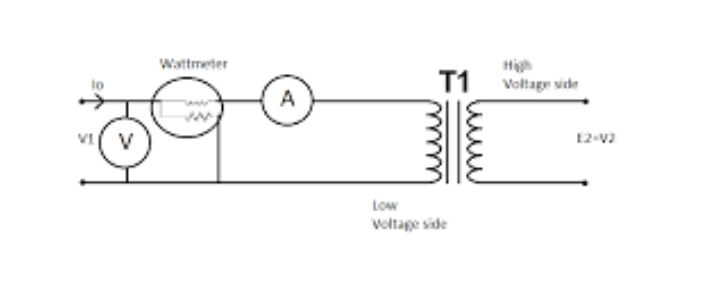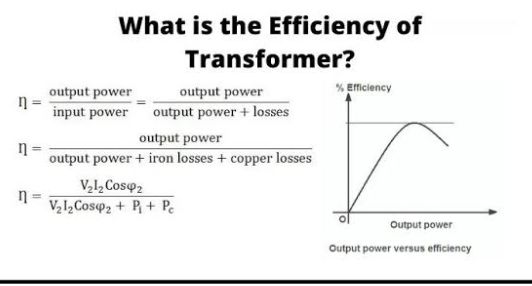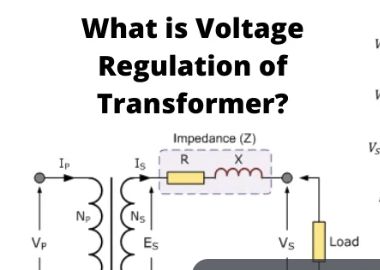- Write short notes on the following electrical tests
I. Short circuit test
II. Open circuit test
III. Efficiency of a transformer
IV. Voltage regulation
A. SHORT CIRCUIT TEST: The secondary is short-circuited through a suitable ammeter, A2, While a lot voltage is applied to the primary and adjusted to circulate full-load current in the primary and secondary circuit iron losses is negligible and wattmeter reading is that of copper losses in the windings [ iron loss a (flux)² applied voltage which is small about 1/30 of V1]
Constant Losses: The iron loss due to hysteresis and Eddy currents are constant at all loads because Flux variation between no load and full load is 2%-5%
Variable Losses: The copper loss depends on the load since variation of load from no load to full load is 100%.

B. OPEN-CIRCUIT TEST: The transformer is run at the rated voltage and frequency. The ammeter (A) gives the No-load current while the wattmeter in the primary circuit reads No-load losses i.e the iron losses [ I²R or copper loss is negligible on no load since it depends on primary current which is less than 5% of full load current at no load]
The ratio of the voltmeter reading V1/V2 gives the ratio of the number of turns

C. EFFICIENCY OF A TRANSFORMER: Efficiency of a transformer is the ratio of output power to the input power.
Efficiency = output power/input power
Output power/(output power+losses) = input-losses/input power

D. VOLTAGE REGULATION: is defined as change in secondary terminal voltage from No-load to Full-load and is expressed as percentage of either No-load or the Full-load value.
Voltage regulation = (No-load voltage – Full load voltage)÷ (Full-load voltage)
Voltage regulation may be taken as the drop in secondary voltage as the secondary is loaded with the primary voltage being constant. This variation between no load and full load is normally not more than 1½ to 2%

COOLING METHODS OF A TRANSFORMER
- Air cooling:
AN – Ambient air as coolant with natural circulation by convection [ up to 1.5MVA] and special conditions such as mines
AF – Forced air circulation - OIL IMMERSED, OIL COOLING:
ONMAN- Natural oil circulation and natural air flow over the tank (tubes) up to 5MVA
ONAF – Natural oil circulation with air blown (forced) on to the tank surface.
OFAN – Oil is pumped round the system while natural air blows over tank. With this, high current densities can be used in the windings.
OFAF – Forced oil – an air – circulation method used for transformer up to 300MVA and upward. - OIL – IMMERSED, WATER COOLING
ONWF – Natural oil cooling of windings and water is forced through copper cooling coils mounted in the tank above the level of the transformer core, but below the oil surface.
OFWF – Oil/water heat exchangers are external to the transformer and are pumped into it. Thus, the tank does not need to contain cooling oils and the tank is smaller.
